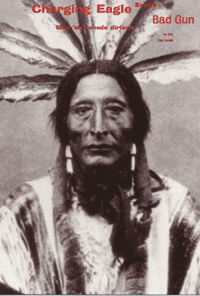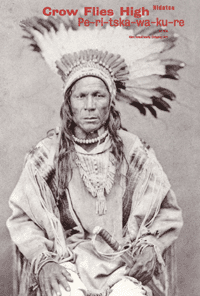
 Home
Home
 Village Village
 Tribes Tribes
 Earth Lodge Earth Lodge
 Pictures Pictures
 Maps Maps
 Project Project
 Simulation Simulation
 References References
 Links Links
 Other ATL Other ATL
 Projects Projects
 Contact Contact
 Credits Credits
North Dakota State University

Support Provided By:


 Last Updated:
Last Updated:
September 2010
|
|
Mandan
|
Hidatsa
|
Arikara
(Sahnish)
|
|

|

|

Images supplied by
: Linden Museum, Germany
|
|
The
first known account of the Mandan is that of the French
trader, Sieur de la La Verendrye, in the fall of 1738.
McKenzie visited the Mandan in 1772. Written accounts
came from Lewis and Clark who arrived among the Mandan
in the fall of 1804. They furnish only the location
and early condition of the archaeological remains both
of the Mandan and Arikara. Alexander Henry, a trader
for the Northwest Company, came to trade fur with the
Mandan in 1806. After Henry Brackenridge and Bradbury
came to the area together in 1810, they wrote additional
information about the Mandan, but mostly about the Arikara.
The next visitor was the artist, George Catlin, who
visited in the spring of 1833. Maximilian, Prince of
Wied-Neuwied, spent the winter months of 1833-34 among
the Mandan.
(Will, Spinden, pp. 86-88).
|
Accounts
of recorded history in the early 18th century identify
three closely related village groups to which the term
Hidatsa is applied. These groups are identified as the
Hidatsa Proper, largest of the three, the Awatixa, a smaller
group, and the Awaxawi.
The three Hidatsa village groups spoke distinct dialects.
The largest of the three were the Hidatsa Proper (Hiratsa)
whose own name for themselves meant "willows."
(Matthews, 1877, p.36B).
|
The
Arikara are of Caddoan stock and are closely related
to the Skidi Pawnee of Nebraska. This group originated
in the South and gradually worked their way northward
up the Missouri River. The French fur traders found
the Arikara located on the Cheyenne River, in South
Dakota, in 1770, but Lewis and Clark found them living
in the vicinity of the Grand River, also in South Dakota,
in 1804.
Source:
"History of the North Dakota Indian Tribes."
American Indian Curriculum Development Program of
United Tribes Technical College.
|
|
Copyright 2003-2004, © NDSU Archaeology Technologies Laboratory
|
|
